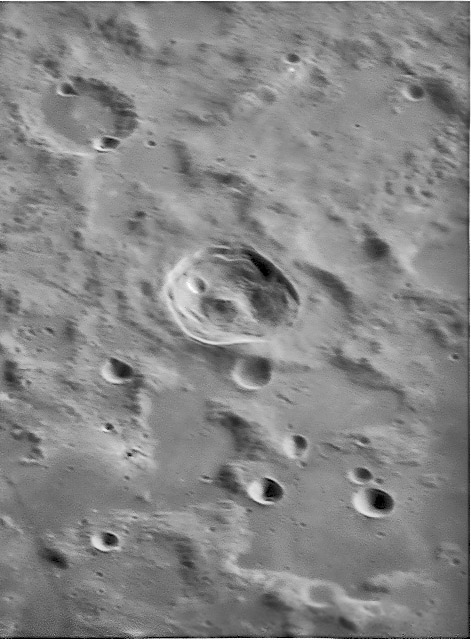
image by Wes Higgins
The Taurus Mountains are a ill-defined piece of lunar real estate with only one fresh crater, the floor-challenged Römer. The unnecessarily named Sinus Amoris - what is there to love about it? - and a piece of the Römer Rille complete the inventory of named features here. But Wes’ image - the only close-up I’ve ever seen of this crater - shows that 40 km wide Römer is an unusual crater. The terraces of most lunar craters are 5-10 km wide at their tops and appear to be substantial chunks of rock that have coherently slide downslope. Römer’s terraces are thin slivers of material - the rock in this area must be less coherent than other places. The small crater that impacted on the inner slope of Römer smoothed the nearby wall, erasing the terraces, and is itself distorted by downslope movement. This is a nice example of how subsequent impacts justle the terraces of crater walls, gradually smoothing out topography. And where is the floor of Römer? It has been covered by terrace debris, but there may be more to the story. In Römer, as in the same sized and floorless Alpetragius, the central peak is broader than is typical. Perhaps the conditions that give rise to the thin terraces also produce the broad peak.
Technical Details:
04/14/05, 18″ Starmaster Reflector, DMK-21FO4 camera, MAP processing, 30fps, stack of 505 frames.
Related Links:
Rükl plate 25
Wes’ lunar photos
Yesterday's LPOD: Nomenclature Zoo
Tomorrow's LPOD: Amazing Grace
COMMENTS?
Register, Log in, and join in the comments.



